
|
300 H – THE FIRST OF THE LAST
By Gil Cunningham
Reprinted
from the 1974 Club News Volume II Number I
|

|
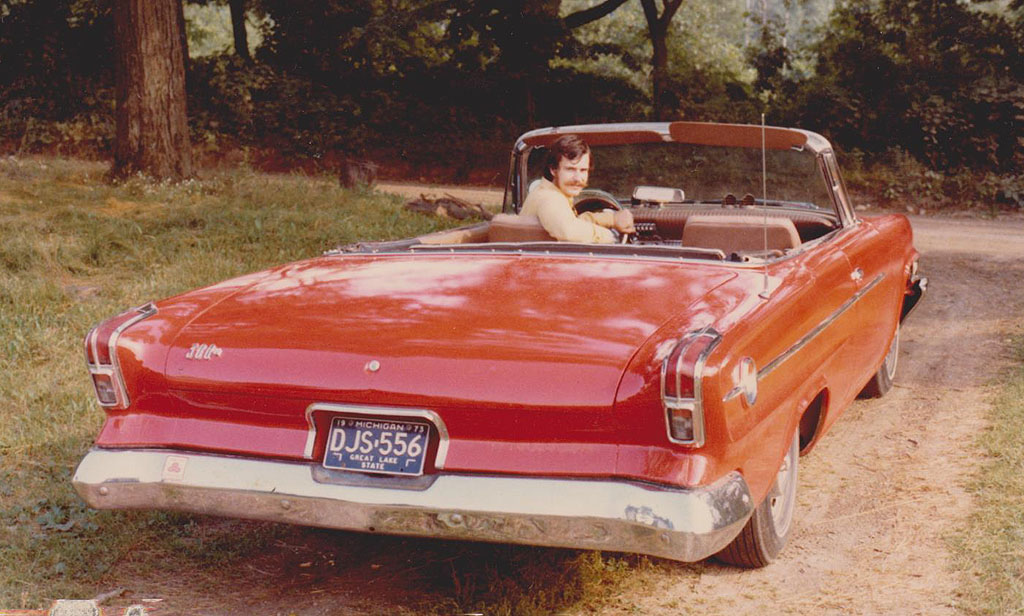
The year 1962 was a significant one for the
Chrysler 300 Letter Series automobile – albeit in a rather
negative sense. One aspect of this “negative significance”
is, in fact, implied in the wording of my first sentence. Prior to
1962 there would have been no need to clarify the 300 as a letter
series – the Chrysler 300 name plate had applied to only one
possible car.
Chrysler Corporation was not in good
financial shape in late 1961. They had weathered loss years in 1958
and 1959, and, after a reprieve in 1960, were sinking towards another
in 1961. Only well received 1962 model introduction in the fourth
quarter kept 1961 books in black ink.
Part of this successful 1962 model
acceptance was due to the introduction of an “additional”
Chrysler 300. In an effort to bolster sales by capitalizing on the
well-known 300 name, Chrysler dropped the mid-range Windsor series,
and replaced it with a sportier model called the “300.”
Marketing wise, this was a good decision and the “Windsor-300”
sold very well. Unfortunately, the dilution of the 300 nameplate
accompanied dilution of the letter series car itself. The 300-H
shared the shorter wheelbase body of the “300” and
Newport. In fact, it was virtually indistinguishable from the new
“300.” As a result, only 558 300-H automobiles (435
hardtop coupes and 123 convertibles) were built – the lowest
300 production to that date.
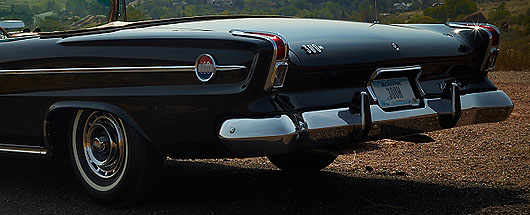 The most dramatic styling changes for
1962 were the rear quarters. Now devoid of fins, they in fact sloped
downward to the tail light. These new sculptured quarters were,
unfortunately, shared with the Dodge 880 of that year, and although
attractive, did have somewhat of a “tacked on” or late
“change of mind” look. This illusion may result because
the rest of the car was virtually unchanged from 1961.
The most dramatic styling changes for
1962 were the rear quarters. Now devoid of fins, they in fact sloped
downward to the tail light. These new sculptured quarters were,
unfortunately, shared with the Dodge 880 of that year, and although
attractive, did have somewhat of a “tacked on” or late
“change of mind” look. This illusion may result because
the rest of the car was virtually unchanged from 1961.
At any rate, Chrysler Corporation was
following the industry trend away from tail fins during the difficult
and more practical economic times of the early sixties. It might be
well to note here that these were the developmental stages of a basic
change in Chrysler philosophy to follow rather than lead, especially
in styling. This unfortunate policy has generally continued through
good and bad times to the present.
For the first time, the 300 was built
on the shorter 122” wheelbase, the 4 inch shortening occurring
forward of the doors. The resulting decreased hood length is perhaps
most noticeable from behind the wheel. For the restorer, however, the
change was probably beneficial since many more “short”
fenders would be available in junkyards than the longer New Yorker
units. 1961 Windsor and Newport fenders will also interchange.
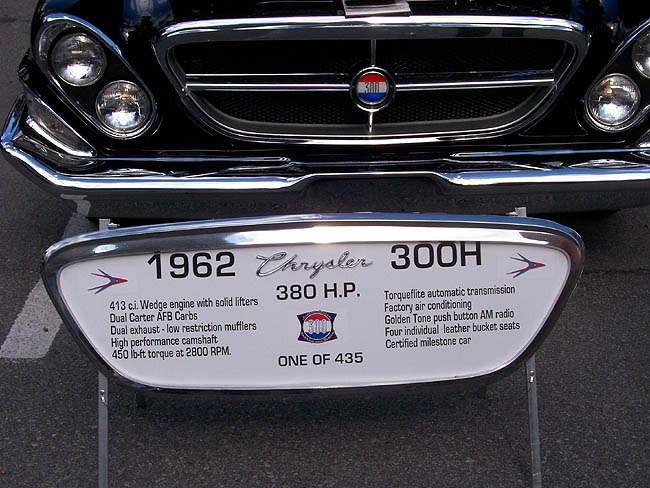 Grille changes from 1961 were very
subtle, since the basic opening and canted headlight styling was
retained. The grille shell does not have the word Chrysler as it did
in 1961. The 1962 inner shell had a raised bead at its inner edge
around the opening and the cross ends were relieved to clear.
Therefore, a 1962 cross will fit in a 1961 shell, but not the
reverse. Grille background was also new, the 300-H utilizing a less
expensive expanded aluminum screen to replace the extruded assembly
in the 300-G. Last, but certainly not least, the grille medallion had
no letter under the 300 and was shared with the “Windsor-300.”
Grille changes from 1961 were very
subtle, since the basic opening and canted headlight styling was
retained. The grille shell does not have the word Chrysler as it did
in 1961. The 1962 inner shell had a raised bead at its inner edge
around the opening and the cross ends were relieved to clear.
Therefore, a 1962 cross will fit in a 1961 shell, but not the
reverse. Grille background was also new, the 300-H utilizing a less
expensive expanded aluminum screen to replace the extruded assembly
in the 300-G. Last, but certainly not least, the grille medallion had
no letter under the 300 and was shared with the “Windsor-300.”
From the exterior, there is only one
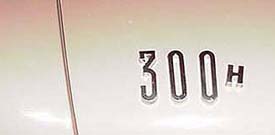 way, so far as I know, to tell a 300-H from the other “300”
– a small chrome “H” after the 300 on the deck lid.
The special 15” 300 wheelcovers are a good indication, but
these were used on non-letter 300s when ordered with the 380 HP
engine. Incidentally, for 1962, the color around their center
spinners was changed to black.
way, so far as I know, to tell a 300-H from the other “300”
– a small chrome “H” after the 300 on the deck lid.
The special 15” 300 wheelcovers are a good indication, but
these were used on non-letter 300s when ordered with the 380 HP
engine. Incidentally, for 1962, the color around their center
spinners was changed to black.
The 300-H was available in four solid
colors only, as shown below:
|
300H Exterior Colors
|
Code
|
Ditz No.
|
|
Oyster White
|
WW-1
|
8293
|
|
Formal Black
|
BB-1
|
9000
|
|
Festival Red
|
PP-1
|
71203
|
|
Carmel
|
ZZ-1
|
22095
|
Convertible tops were available in
either black or white.
As in previous years, a few 300-H’s
may have been special ordered in paint colors other than these. I
have not, however, seen any that could be verified.
The 300-H continued the same basic
four individual seating design used in the F and G. There were
numerous interior changes however, many of which were intended to
reduce cost.
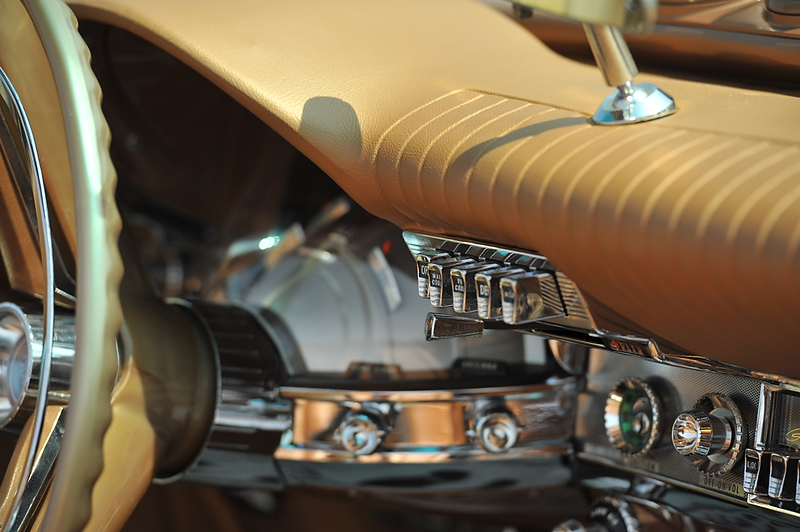 The entire interior was
now tan instead of the lighter beige used in 1961. Seats returned to
the 300-F pattern, but used more vinyl panels. Carpets were changed
from black to golden tan. The instrument panel was a metallic tan as
was the crash pad. Gone were the integral door arm rests of the F and
G. The “H” arm rests were conventional molded units which
attached to the door trim panels (which had embossed
piping yet!) by screws. Another foreboding interior change was the
replacement of the traditional 300 horn button medallion with one
incorporating the red, white, and blue colors around its
circumference. For those students of esoteria, the floor aluminum heel and
retaining plates had a different surface design than the F and G!
The entire interior was
now tan instead of the lighter beige used in 1961. Seats returned to
the 300-F pattern, but used more vinyl panels. Carpets were changed
from black to golden tan. The instrument panel was a metallic tan as
was the crash pad. Gone were the integral door arm rests of the F and
G. The “H” arm rests were conventional molded units which
attached to the door trim panels (which had embossed
piping yet!) by screws. Another foreboding interior change was the
replacement of the traditional 300 horn button medallion with one
incorporating the red, white, and blue colors around its
circumference. For those students of esoteria, the floor aluminum heel and
retaining plates had a different surface design than the F and G!
An interesting change in
the 300-H was the use of individually adjustable, but non-swiveling
front seats. Unfortunately, only manual adjustment was available, and
the versatility of a six or four-way power unit could not be
achieved. Power windows, steering, and brakes were standard, as
before. For the first time since 1959 auto pilot was optionally
available. In 1962 as in 1961 mirrormatic could be obtained only
as a dealer installed item.
I hope the preceding
paragraphs have not sounded like I might be “down” on the
300-H. I am not really (I own and enjoy an “H”
convertible); however the thought of what became of the 300 letter
series cars in succeeding years, starting in 1962, is always in the
back of ones mind, dampening the enthusiasm.
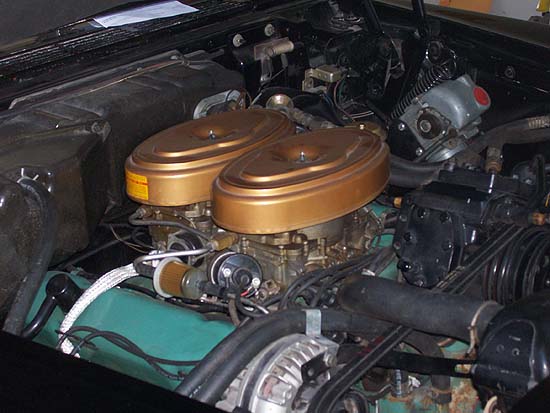 Fortunately, there is
one specific area of the 300-H where it may be impossible to be over
enthused – performance! Because of the 122” wheelbase,
the 300-H was around 10 percent lighter than an F or G which would
give it an acceleration edge with the same engine. But the standard
“H” engine was a higher winding slightly higher
horsepower unit. The long exotic rams were replaced with a
conventional in line 2-4 barrel carburetor arrangement, the cam was
wilder and the lifters were solid. The power plant was coupled to a
completely new aluminum cased Torqueflite which featured larger
diameter bands and planetary gear carriers, lighter weight, smaller
overall size (not too important in a 300-H with its console) and
manually controlled shifts when
desired (which was most of the time). But there was more for the lead
foot. Adding short rams (same overall length but siamesed inside) and
a wilder cam brought the 413’s horsepower up to 405 at 5400
RPM. This engine seems to have been available in the car from the
factory, but I cannot confirm this and have never seen such a
vehicle. One could go further, however. 1962 specifications list five
additional 426 cubic inch wedge head engines available through
Chrysler dealers for racing only, culminating with a 421 HP 498 ft
lb. torque macho job! The chart below will serve, it is hoped, to
clarify this maze of engine options: Fortunately, there is
one specific area of the 300-H where it may be impossible to be over
enthused – performance! Because of the 122” wheelbase,
the 300-H was around 10 percent lighter than an F or G which would
give it an acceleration edge with the same engine. But the standard
“H” engine was a higher winding slightly higher
horsepower unit. The long exotic rams were replaced with a
conventional in line 2-4 barrel carburetor arrangement, the cam was
wilder and the lifters were solid. The power plant was coupled to a
completely new aluminum cased Torqueflite which featured larger
diameter bands and planetary gear carriers, lighter weight, smaller
overall size (not too important in a 300-H with its console) and
manually controlled shifts when
desired (which was most of the time). But there was more for the lead
foot. Adding short rams (same overall length but siamesed inside) and
a wilder cam brought the 413’s horsepower up to 405 at 5400
RPM. This engine seems to have been available in the car from the
factory, but I cannot confirm this and have never seen such a
vehicle. One could go further, however. 1962 specifications list five
additional 426 cubic inch wedge head engines available through
Chrysler dealers for racing only, culminating with a 421 HP 498 ft
lb. torque macho job! The chart below will serve, it is hoped, to
clarify this maze of engine options:
|
Displacement
|
413
|
413
|
426
|
426
|
426
|
426
|
|
Horsepower @ RPM
|
380 @5200
|
405 @ 5400
|
373 @ 4800
|
385 @ 4800
|
413 @ 5400
|
421 @ 5400
|
|
Torque @ RPM
|
450 @ 3600
|
473 @ 3600
|
472 @ 3200
|
486 @ 3200
|
485 @ 3600
|
498 @ 3600
|
|
Comp. Ratio
|
10.1/1
|
11.0/1
|
11.0/1
|
12.0/1
|
11.0/1
|
12.0/1
|
|
Carb & Manifold
|
2-4 BBL Runner
|
2-4 BBL Ram
|
1-4 BBL ** Runner
|
1-4 BBL ** Runner
|
2-4 BBL Ram
|
2-4 BBL Ram
|
|
Intake duration
|
2680
|
2840
*
|
2920
|
2920
|
3080
|
3080
|
|
Exhaust duration
|
2680
|
2840
*
|
2920
|
2920
|
3080
|
3080
|
|
Overlap
|
480
|
550
*
|
670
|
670
|
880
|
880
|
|
Intake lift (zero
lash)
|
.444
|
.449
|
.490
|
.490
|
.520
|
.520
|
|
Exhaust lift
|
.456
|
.454
|
.490
|
.490
|
.520
|
.520
|
|
Exhaust valve
diameter
|
1.60
|
- 1.74 or optional
1.88 (stage III heads) -
|
|
Intake valve diameter
|
2.08
|
2.08
|
2.08
|
2.08
|
2.08
|
2.08
|
|
Carter Carb
|
F: AFB-3258-S
R:AFB-
3259-S
|
Two
AFB-3084-S
|
One
AFB-3397-S
|
One
AFB-3397-S
|
Two
AFB-3084-S
|
Two
AFB-3084-S
|
|
Transmission
|
3 Spd.
Man. or Torqueflite
|
3 Spd.
Man. or Torqueflite
|
3 Spd.
Man.
|
3 Spd.
Man.
|
3 Spd.
Man. or Torqueflite
|
3 Spd.
Man. or Torqueflite
|
*Later
production 405 HP engines used 2920 -
2920 - 670
cam
**NASCAR rules allowed
only one four barrel carb.
These engines were all available in the
“non-letter 300” and 300-H. When a non-letter was so
equipped 15 inch wheels with 300H wheelcovers and a 150 MPH
speedometer were included. I personally doubt that any 300-H was
built-up with a 426 engine – these would have been used in the
lighter “300” for racing purposes only. The 300-H, even
without 426 power, still possesses the distinction of being the most
powerful 300 ever available.
Performance of the standard 300-H was
exceptional, and the 405 HP job was fantastic. Hot Rod Magazine fine
tuned one of these 405 engines for drag racing and achieved runs as
low as 12.88 seconds elapsed time and 108 MPH.
All magazine road tests of the 300-H
lauded its performance, but I found it surprising that they also
praised its braking, since the brakes were the same 251 square inch
units as previous years.
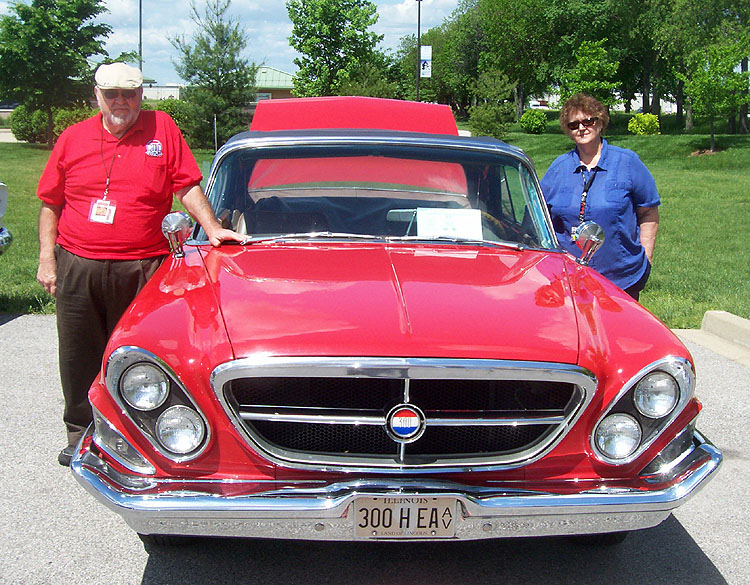 Now, we all love our 300s, but most owners
of pre-1962 models will reluctantly admit not being too impressed
with the high speed performance of their brakes – not much room
between pedal and floor after that second 80 to 0 stop is there, old
chap? Oh well, I suppose even a Chrysler 300 must have at least one
minor deficiency. At any rate, the 300-H brakes had to stop around
440 less pounds than in 1961 and this apparently resulted in their
greater effectiveness.
Now, we all love our 300s, but most owners
of pre-1962 models will reluctantly admit not being too impressed
with the high speed performance of their brakes – not much room
between pedal and floor after that second 80 to 0 stop is there, old
chap? Oh well, I suppose even a Chrysler 300 must have at least one
minor deficiency. At any rate, the 300-H brakes had to stop around
440 less pounds than in 1961 and this apparently resulted in their
greater effectiveness.
The 300-H suspension was still firmer
than other Chryslers, but for the first time, not as much firmer.
Torsion bar rate at the wheel was 130 lbs. per inch as compared to
175 for the 300G. Rear spring rate was 125 lbs. per inch while the
300G springs were 130 to 140. It must be remembered, of course, that
because of its lighter weight, the 300-H would not require as high
spring rates for the same handling performance. The front anti-roll
bar was .75 inches in diameter, down from .82 on the “G”.
To complete the performance image the
“300” and 300-H were expected to uphold, 19 different
axle ratios were available, ranging from 2.76/1 to 6.17/1.
Any Chrysler 300 trivia
nuts among our readers will have a field day with the 300-H; highest
horsepower optional engine;, highest torque optional engine; most
engine options; most rear axle ratios, technically,
the first letter availability with a single four barrel (300K and L
owners take heart!); to list a few.
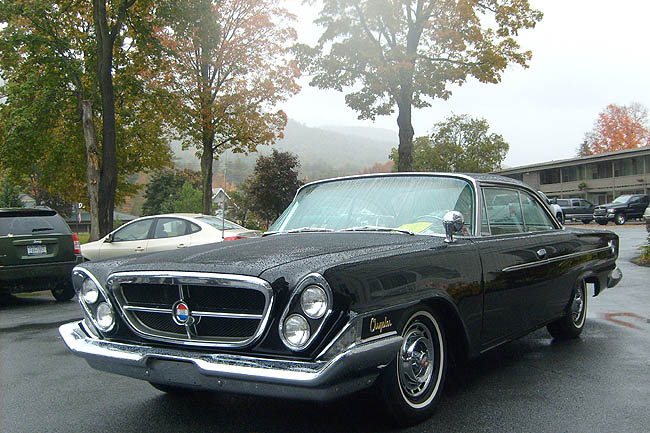 The possession of so many
esoteric “first” and “mosts” by the 300-H is
more understandable after one analyses conditions surrounding its
introduction. Chrysler may not have really known what to do with a
large super car in 1962. Compact and semi-compact cars with nearly as
powerful engines were just starting to emerge as the future
performance cars – and at a much cheaper cost. So, the 300-H
(and “300”) were provided enough options to enable them
to compete at the drags as well as NASCAR (in theory at least). So
far as I know very few hot Chryslers were campaigned in either event.
The new “B” body Plymouths and Dodges had less weight for
dragging and less wind resistance for top speed competition.
The possession of so many
esoteric “first” and “mosts” by the 300-H is
more understandable after one analyses conditions surrounding its
introduction. Chrysler may not have really known what to do with a
large super car in 1962. Compact and semi-compact cars with nearly as
powerful engines were just starting to emerge as the future
performance cars – and at a much cheaper cost. So, the 300-H
(and “300”) were provided enough options to enable them
to compete at the drags as well as NASCAR (in theory at least). So
far as I know very few hot Chryslers were campaigned in either event.
The new “B” body Plymouths and Dodges had less weight for
dragging and less wind resistance for top speed competition.
However, the 300-H, with its lighter
weight and 380 HP engine combining to form one of the greatest 300
letters ever, provided handling and highway cruising in the tradition
of its predecessors. And too, ownership of a 300-H is ownership of
the second rarest 300 hardtop or the rarest 300 model of all, the H
convertible. It is, of course, unfortunate that much of this fine
car’s identity was concealed in a standard appearing exterior.
However, as every 300-H owner or vanquished competitor is aware, the
only “standard” feature of the “H” was the
exterior!
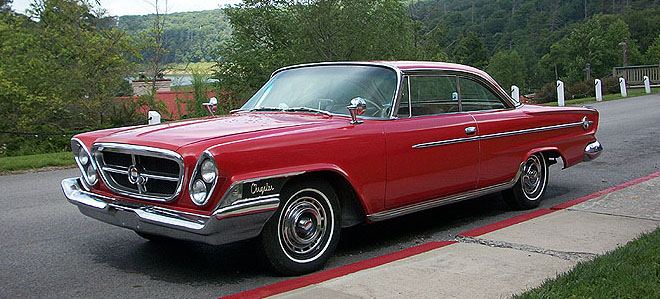
|